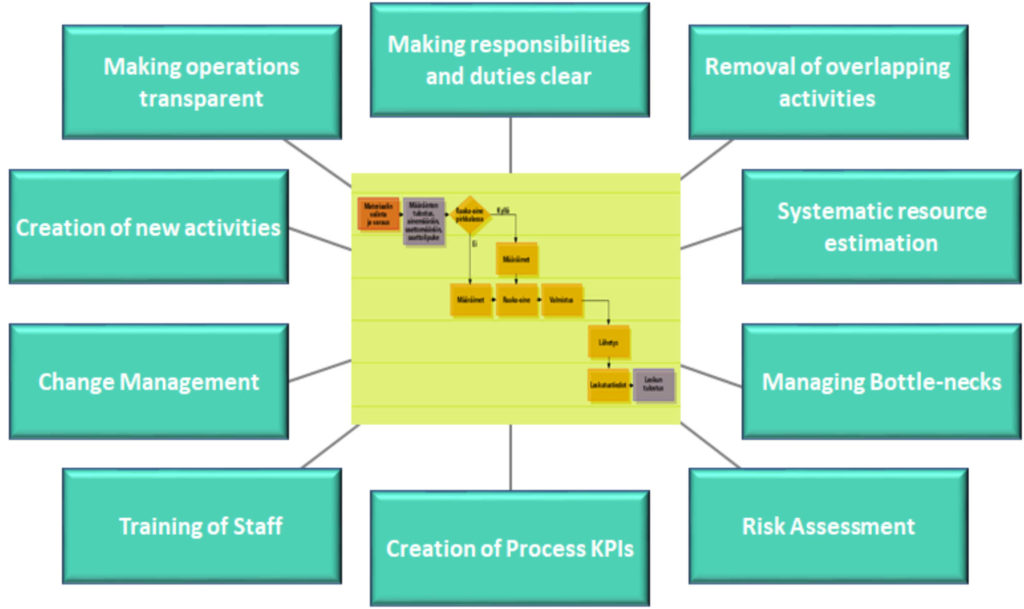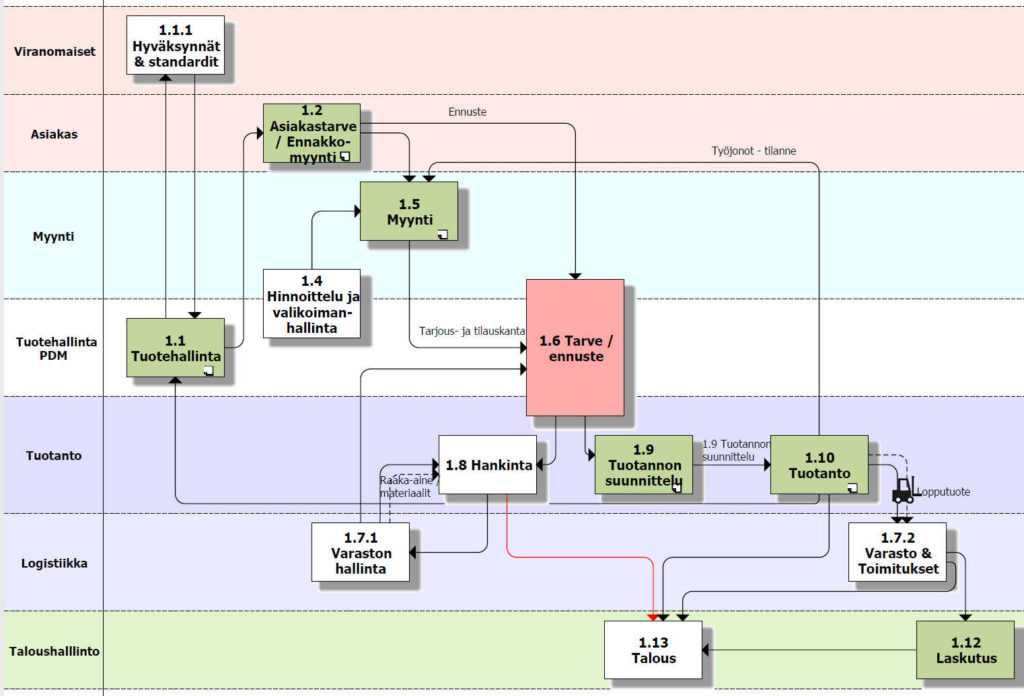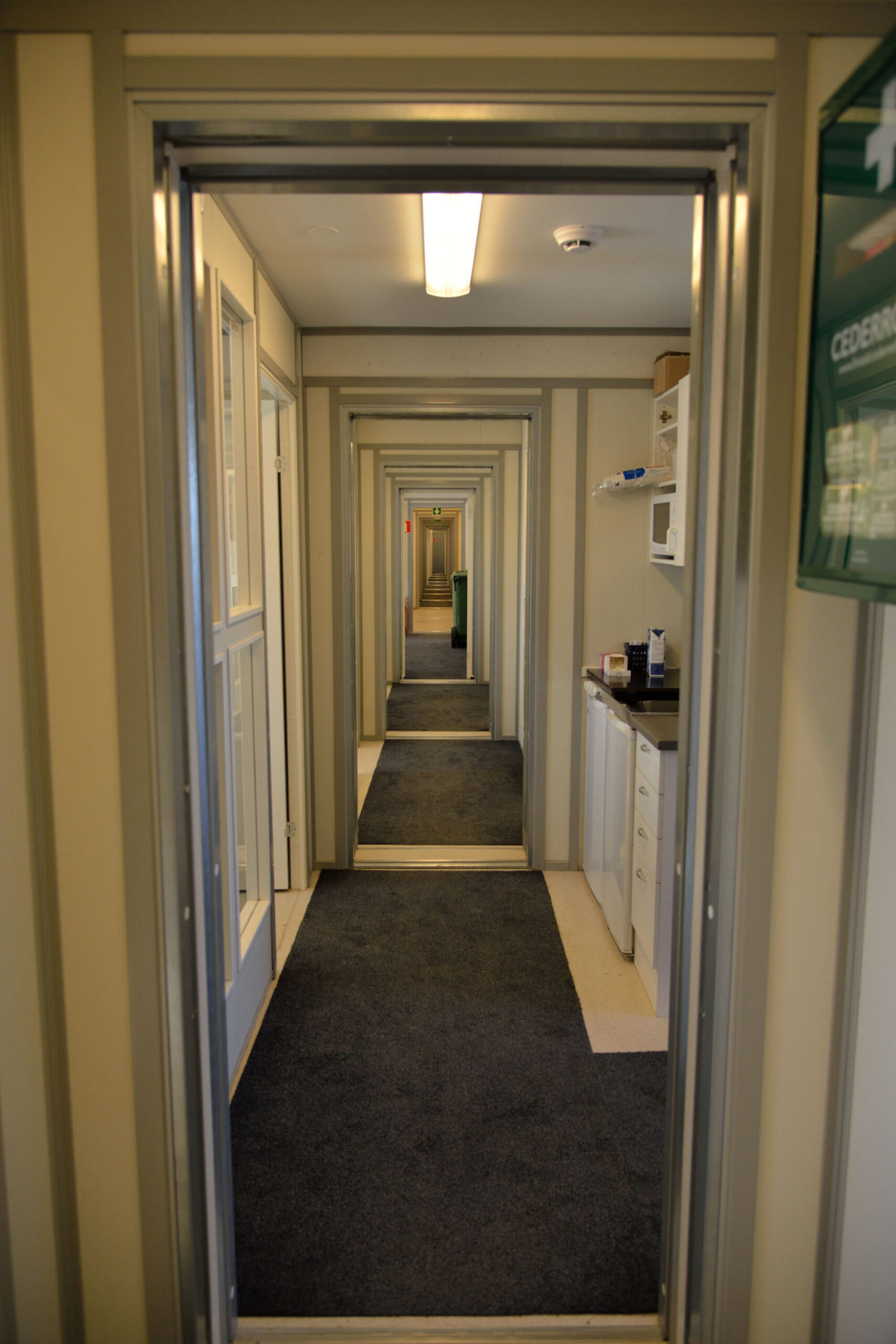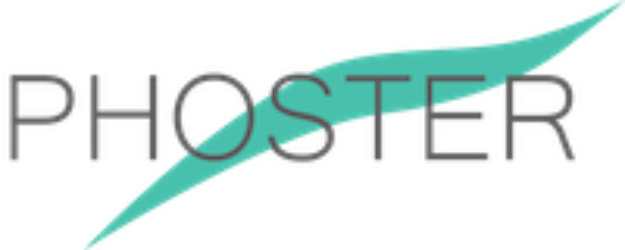Process modelling opens the door to their continuous development. The objective of modelling work is to
- Identify processes
- Model the current state and target mode
- Expand the skills of the company’s staff: how to work today and how to act in the future
The detail of the descriptors is determined by the objectives. The top level can be used to model processes to streamline the business model. The detail level describes the data streams, data warehouses and working methods and tools of individual operations.
It is a good idea to model the processes only as necessary: in this case, the main focus may be the identification of the manoeuvrability factors, the determination of the control elements, the characterisation of responsibilities and powers, or the verification of system requirements. In any case, it is worth describing the activities, the information flow, to identify bottlenecks, duplication of work and unclear tasks.
As a result, the personnel of the company have the capacity and ability to develop independent activities. This also serves the quality system (e.g. ISO 9001:2015).

Here is an example of a process hierarchy (in a manufacturing company):
- Master Data Management,
- Product information and BOMs
- Business partners: Customers, vendors
- Organization
- Warehouses and logistics
- Client processes
- Sales and marketing
- Forecast processing
- Ranges and Price lists
- Orders
- Standard Customers,
- Random clients,
- Export sales,
- Sales and marketing
- Purchase
- Procurement planning
- Purchase
- Products (Trading)
- Materials and Packaging supplies
- Subcontracting
- Amenities at
- Manufacturing/Production
- Production planning
- Load Planning and Production orders
- Manufacturing and Manufacturing Entries
- Quality Management
- Storage and deliveries
- Inventory Planning (bins, balance management, availability),
- Warehouse Management: Arrivals, product marking, counting
- Deliveries
- Financial management
- Personnel Management-Wages
- Ledgers
- Accounting
- Financial statements
- Billing
- Domestic
- Export
- Pro Forma
- Reporting.
Generally, it is worth identifying the existing strengths (competitiveness factors), then the problems and these based on the definition of what is worth describing and at what precision level. The modelling of Proses is carried out in small groups of cross- Participating in the process are represented. This approach will serve to share information within the company (including tacit knowledge-‘ TACs information ‘). In the description session, the job is done at one time on the basis, allowing participants to continually see and authenticate roles, activities, and data streams.
The development is roughly three levels of iteration:
- Describe as necessary the current state
- Describes roughly the target mode
- Specify the process descriptions as necessary to detail.
Below is an example of a process diagram that has been exploited to outline a top-level business model:


